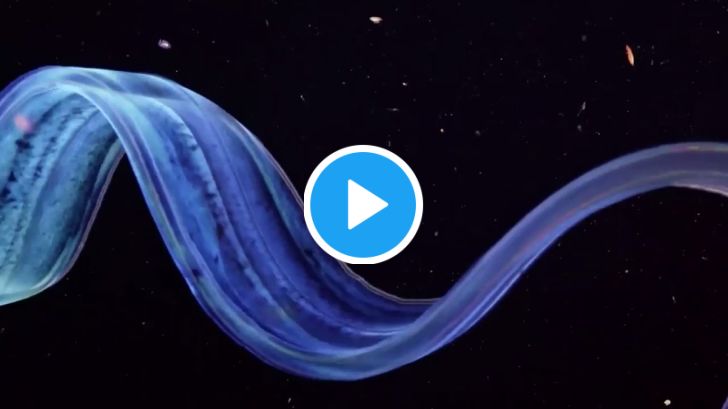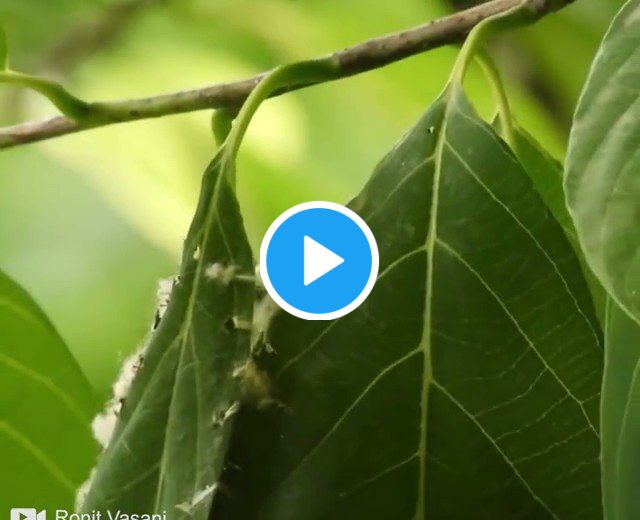Comb jellies, glowing monotremes, and ocean acoustics
This last couple of weeks, I’ve been soothed by what’s going on with our biodiverse neighbors on Earth. As it happened lots of bananas relating to wonderous critters and their superpowers ripened recently. These are stories and imagery that took me away from the pettiness of our current national human nightmares.
You’ll probably never meet a comb jelly, but they are super cool. This crossed my timeline via @kimdraws who said that if they were a sea animal they would want to be one of these.


Since I work with audio waveforms much of the day, you can imagine the appeal, and I wondered what kind of sound emanates from these wavy beings. These folks form a part of what I learned in the article is the “jellyweb”:
Although many of us will never encounter one of these beautiful and highly adapted creatures in the wild, scientists now know that they play a critical role in what’s known as the JellyWeb, a productive food web in the open ocean that consists primarily of soft bodied predators and prey.
They also remind me a whole lot of the creatures from Vonnegut’s “Sirens of Titan” called Harmoniums, flounder-like beings that live on cave walls and thrive on sound waves rippling through them. And if you’re a writer or world creator and want to think of a scene where things that seem like part of the background reveal themselves as living things, you could do worse than dropping some comb jellies into the scene.
I’ll leave you to click to find out what they look and behave like when they are in the role of predator, but when they are prey it goes down like this:
…the comb jelly employs a different tactic for moving through the water. Instead of gliding forward like an airplane, it undulates like a fast-moving sea snake. At the same time, it changes its body from transparent to milky by pumping calcium across its cell membranes. With the milky color in full effect, the iridescent blue-green spots of the jelly truly shine. The sudden changes in appearance and behavior is thought to startle or confuse would-be predators. And if those should fail to deter a pursuer, the jelly has one more costume change to try: It will curl in on itself, forming a dense ball that resembles an iridescent cinnamon bun, with the animal’s vulnerable mouth buried deep inside. While this last-ditch strategy may result in a nipped wing, Cestum, like many comb jellies, has excellent regenerative capabilities and can regrow lost parts, as long as its mouth is left intact.
No monotreme has glowed before, enter the…platypus? Myessir. These smart scientists examined existing museum specimens of deceased platypus at the Museum of Natural History in Chicago under various types of light, and revealed what had been there all along, unbeknownst to naturalists for hundreds of years. To confirm, they then checked out specimens from the University of Nebraska State Museum. Same deal. They’re not sure exactly what this does for the well-known undercover ducks.

This paper contains some amazing and very recent sciencing, but it is all buried in dry academic journal style writing. This is exciting, you all! Let it be reflected in cooler prose. The paper ends on this cliffhanger, which is kind of exciting:
Biofluorescence has now been observed in placental New World flying squirrels, marsupial New World opossums, and the monotreme platypus of Australia and Tasmania. These taxa, inhabiting three continents and a diverse array of ecosystems, represent the major lineages of Mammalia. Biofluorescence in mammals is not restricted to a few closely related specialists; instead, it appears across the phylogeny, which begs[banana ed: sic] the question: Is biofluorescence an ancestral mammalian trait?
Found via @nycsouthpaw
Interstitial: Look at this bird that sews! Thank you @modern_goat.
Listening to the sea might be the best way to get a read on what’s going on down there. In what is their third or fourth appearance in the bananas, Sabrina Imler wrote another breathtaking piece in The New York Times. This one is about the emerging science and practice of recording and separating out the sounds that various things make in the depths of the sea. I don’t want to steal too much of this article’s thunder, so a quick summary graf, and then an intriguing piece of the project:
Dr. Lin joins a growing field of acousticians who believe that sound may be the quickest, cheapest way to monitor one of the most mysterious realms of the ocean. A database of deep-sea soundscapes could provide researchers with baseline understanding of healthy remote ecosystems, and singling out the sounds of communities or even individual species can inform scientists when populations are booming.
And dig this taste of what they’re doing:
“Dr. Lin’s recordings reveal a medley of shrill beeps, distant whistles and an underwater chorus of fish that sounds almost like wind gusting through a mountain pass. But what is it all? Dr. Lin and his lab at Academia Sinica are developing a software algorithm to separate the elements of the soundscape into categories: biophony (creatures), geophony (weather, earthquakes, volcanic eruptions) and anthropophony (pesky or insidious human noises, like seismic tests, ships and mining). Then the program will isolate individual sounds, such as dolphin whistles or chattering fish, and could even discover the sounds of new species.
The photos and linked sound clips are just incredible in this piece, and here’s another snippet about the project itself:
Although the researchers are still poring through the data — recordings wrapped up in March — some soundscapes have already provided insight into life in the deep sea. The Minami-Tori Shima recording revealed a chorus of fish that began right after sunset and ended after midnight at depths with no visible light. “It’s really amazing,” Dr. Lin said. He suspects the chorus may be timed with some fish’s daily vertical migration toward the surface at night, although he said he would need to conduct more surveys to confirm this connection.”
One of the many things about this that captured my imagination is the challenge of matching the being to the sound, techniques like using video along with the audio recording to piece together what sound belongs to what undersea friend can run in to some obvious and not-so-obvious problems. Kind of funny that attribution is a big problem here like it is in the digital advertising space, or maybe that’s just where my brain went after a long day.
The feeling I got from this piece, as I read it from my perch in a podcast editing suite, is that the tools we think of as purpose-built for one thing are all useful in ways you can’t even necessarily imagine from your puny vantage point. And doubly so for the senses we habitually expect will be the ones that have the richest and most important information to track. My note: “Everything matters to everything is the feeling I get connecting my current world to this.”
Bonus bananas: Dogs have been companions to us for much much longer than you might think. Check out what is believed to be an ancient paperclip-lookin’ squid.
These are the bananas I have grabbed for you. I hope they give you something to sink your head in to for a little while. You can hit reply and it will go only to me. Thank you.

